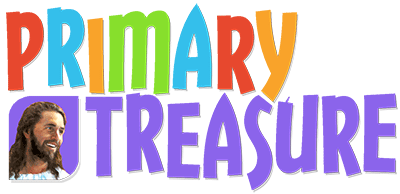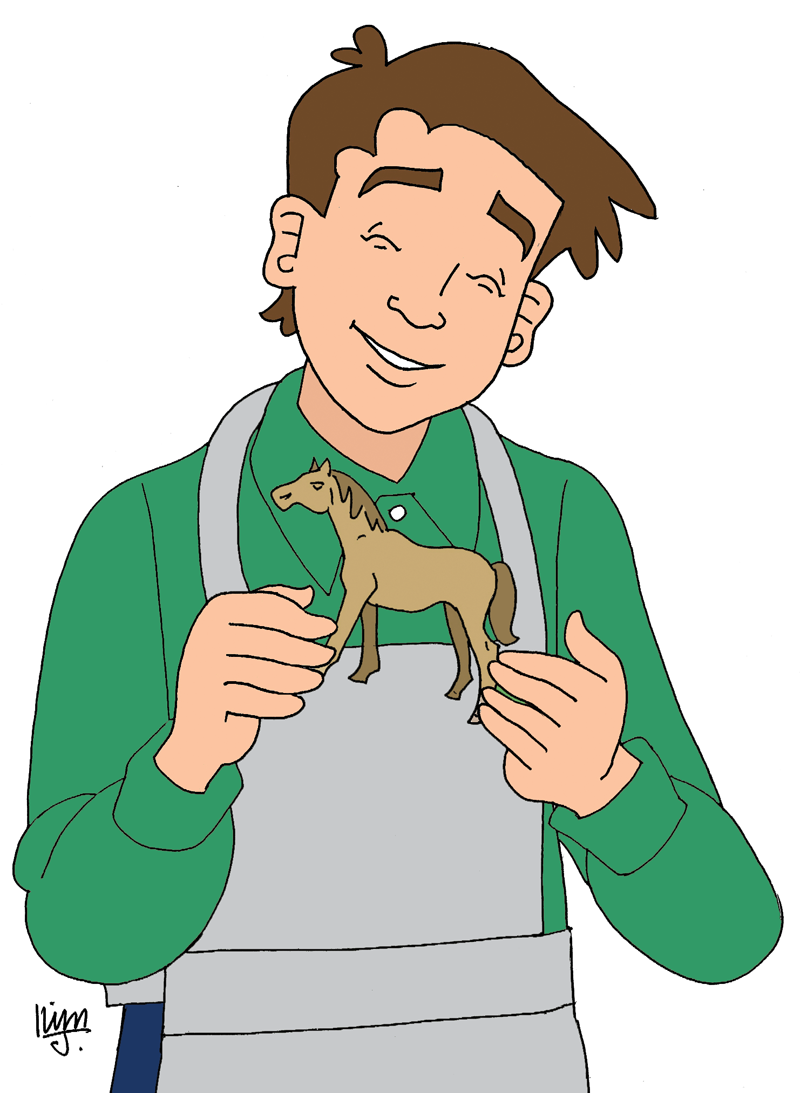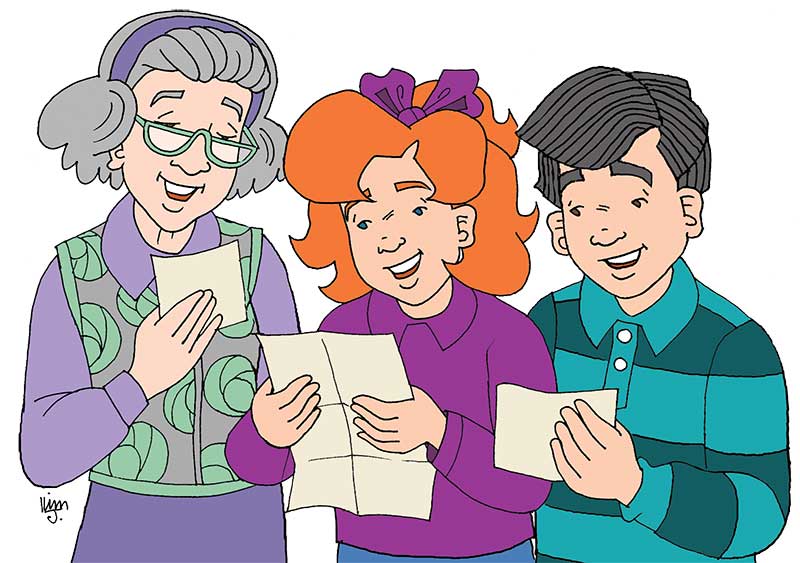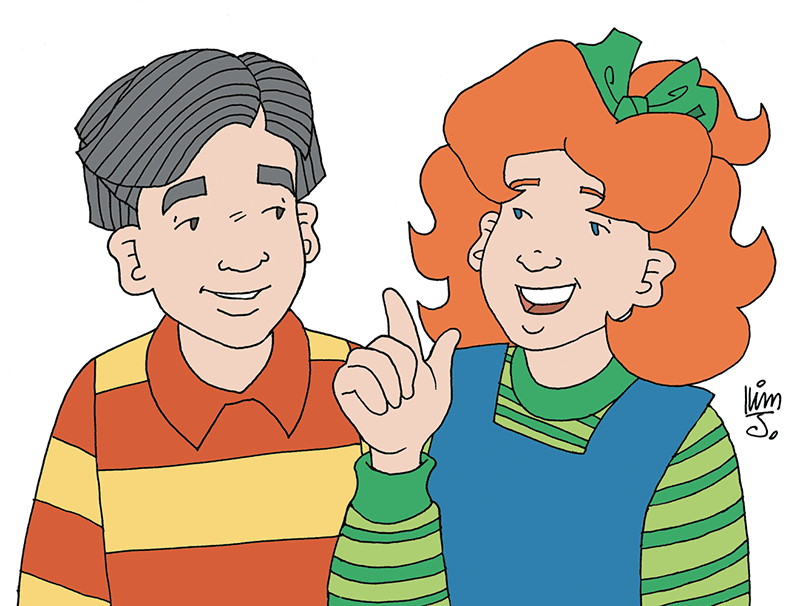
Linda Porter Carlyle
MacKenzie Isabelle Evans and Joseph took turns scrubbing their hands at the kitchen sink.
“Are the two newest bakers in Jacksonville ready to begin?” Mac’s mom, Mrs. Evans, asked with a twinkle in her eye.
“We’re ready!” Mac exclaimed. She gave Joseph a high five.
“Do you remember what I told you are the two basic ingredients in bread?” Mrs. Evans asked them.
“Flour and water,” Joseph answered quickly.
“Good memory!” Mrs. Evans praised. “Now one loaf of bread has about one cup of water in it and three or four cups of flour. I think I’ll let each of you make two loaves today, because that’s an easy amount of dough to handle.
“So what you’ll do first,” she continued, “is fill your big bowls with hot water and let them sit in the sink and get nice and warm.”
“Why do we do that?” Mac asked curiously.
“We’re going to use yeast in our bread,” Mrs. Evans explained. “The yeast is what makes the bread rise and not stay just a hard lump of dough in the bottom of the pan. And the yeast will die if it gets cold.”
Joseph poked Mac. “You don’t want to make dead bread!”
Mrs. Evans laughed. “Now put your measuring cups in the hot water in the bowls so they will warm up too. If you put warm water into cold measuring cups, it will cool the water down.”
Mrs. Evans went to the pantry and came back with the container of sugar. “Put one cup of warm water in your measuring cups,” she instructed. She watched Mac and Joseph measure carefully. “Now put a spoon of sugar in the cup of water and stir it until it dissolves.”
“How come we’re only using one cup of water if we’re making two loaves of bread? You told us we need one cup of water for each loaf,” Mac said.
“Good observation,” Mrs. Evans exclaimed. “Just keep following my directions and paying attention. You’ll see. Now put one tablespoon of the yeast in the sugar water and stir it up.”
Mac and Joseph carefully did as Mrs. Evans said.
“This smells good,” Joseph said, sniffing his yeasty water.
“OK. Now dump the water out of your big bowls and put one cup of hot water in each of them.”
“I get it!” Mac exclaimed. “Now we have the two cups of water we need!”
Mrs. Evans disappeared into the pantry again and came out with a jar of molasses. “Put some of this in your bowl,” she said.
“How much?” Mac asked.
“Oh, not too much,” Mrs. Evans answered. “I don’t know. Put in a dab.”
“What’s a dab?” Mac frowned.
“I don’t know. About 1/4 cup,” Mrs. Evans said. “Making bread is art, not science. You don’t have to worry about being absolutely exact when you measure—except for the water and the yeast.”
Joseph and Mac both added molasses to their hot water. The water turned a rich brown color when they stirred it in.
“Add a dab of oil,” Mrs. Evans said.
“The same size dab?” Joseph asked.
“Yes. Or a little less,” Mrs. Evans replied.
“This is fun!” Mac said. “Look how the oil sits on top of the water!”
“Now salt,” Mrs. Evans said. “You’d better measure that. Use two teaspoons and stir it in.”
“Look! Look at my yeast water!” Joseph exclaimed suddenly. “It’s growing!”
“What happened to it?” Mac shrieked. “It’s all foamy too!”
Mrs. Evans laughed. “The yeast is growing,” she said. “It’s eating the sugar you put in the water and it’s growing. Now we know it’s alive and that it will make the bread rise.”
“It looks like some kind of horrid science project!” Mac said, shuddering.
“Well, add it to your molasses water, and stir it up.”
Both Joseph and Mac did.
“Now it’s time to put in some whole wheat flour from the mill,” Mrs. Evans said.
“How much?” Joseph asked.
“Oh, a cup or two,” Mrs. Evans answered. “Don’t bother to measure it. Just spoon some in, and stir it until it’s pretty smooth.”
“This is easy!” Joseph said, stirring with vigor.
“You’re right,” Mrs. Evans agreed. “Making bread isn’t really hard at all. But people nowadays just don’t usually take the time to do it.”
“Now what?” Mac asked. “What do we put in next?”
“The cornmeal and the oats,” Mrs. Evans answered.
“How much?” Joseph asked.
“I don’t know,” Mrs. Evans said. “Maybe about 1/2 a cup of cornmeal, maybe a little more. And I’d say about a cup, or a cup and a half, of oats.”
Mac and Joseph spooned in cornmeal and oats and stirred.
“Now you put in more flour,” Mrs. Evans said. “Add about another cup and mix it in.”
“It’s getting hard to stir. My arm’s getting tired!” Mac complained.
“Keep stirring. It’s going to get harder,” Mrs. Evans said with a smile.
Mac and Joseph added flour and mixed their dough until it was practically impossible to stir any longer. “What do we do now?” Joseph asked.
“This is my favorite part!” Mrs. Evans said. “Now we get to knead! Sprinkle flour on the counter, and dump your dough out on it. I’ll show you how.”
Mrs. Evans helped them scrape their bowls. She set the bowls in the sink and filled them with warm water. “That keeps the bowls warm,” she said. “We’ll want them warm later on.” She showed Joseph and Mac how to put flour on their hands and how to sprinkle flour over the dough. She pushed down on the dough, turned it over, and pushed down hard again. “Don’t be gentle,” she cautioned them. “We want to wake up the gluten in the flour.”
“What’s gluten?” Joseph asked.
“It’s the part of the flour that gives the bread its texture,” Mrs. Evans tried to explain. “I don’t know all the scientific details. I just know what works. You’ll have to knead the bread for about ten minutes. Give it a good workout!”
The dough stuck all over Joseph’s fingers. Mrs. Evans showed him how to rub it off and how to coat his hands with flour again. She put more flour on the counter for him to roll his dough in. He tried not to poke his fingers in it again, but just knead with his hands.
“You can pound it too,” Mrs. Evans said, hitting Mac’s dough with her fist.
“You never let me punch anything!” Mac exclaimed.
“You have my permission to punch your bread dough as much as you want to,” Mrs. Evans replied.
“This is great!” Joseph said to Mac. “If you hadn’t decided to make money to help Mrs. Woodson go on her mission trip, I’d never know how much fun baking bread is!”





